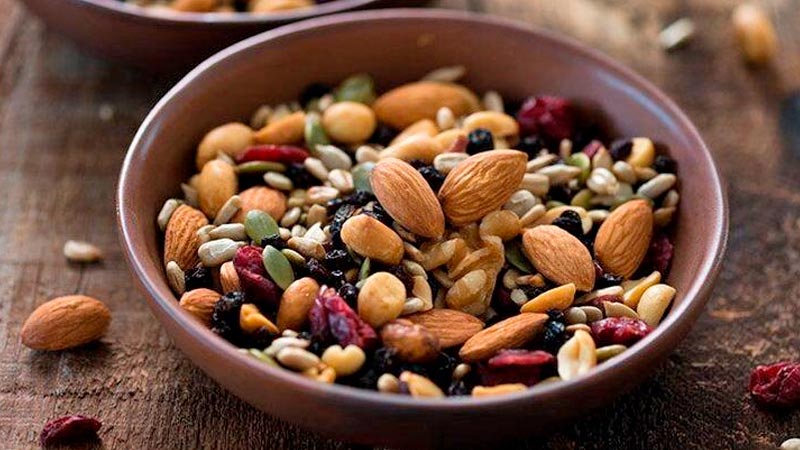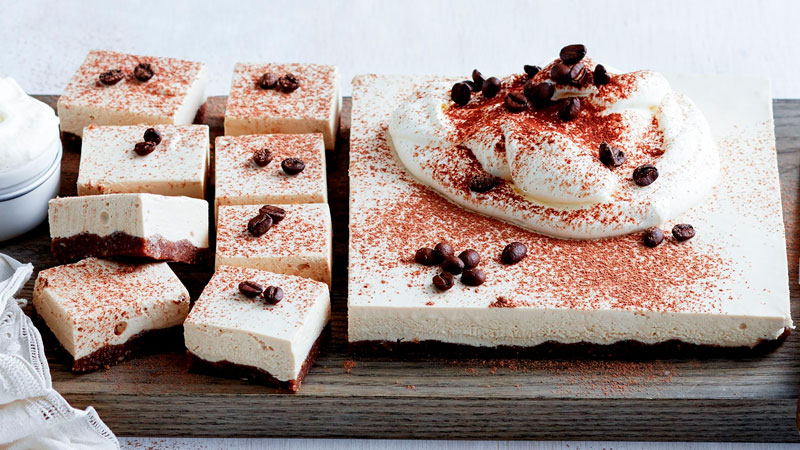Snacks are an important part of many people's diets. However, many snacks contain high levels of sodium, which can be harmful to health. Fortunately, there are many low-sodium snack options available on the market.
Table of Contents
Low-sodium snacks are a great option for those who want to maintain a healthy diet. They can help reduce blood pressure and the risk of heart disease, as well as helping to maintain a healthy weight. There are many low-sodium snack options available, including fresh fruit, vegetables, nuts and seeds.
If you're looking for healthy, low-sodium snack options, there are plenty available for you to choose from. By choosing low-sodium snacks, you can enjoy a delicious taste without compromising your health.
What Are Low Sodium Snacks?
Low-sodium snacks are those that contain less salt than traditional snacks. Salt is one of the main sources of sodium in food, and a diet high in sodium can lead to health problems such as hypertension and cardiovascular disease.
When choosing low-sodium snacks, it's important to read the food labels to check the amount of sodium in each portion.
Some low-sodium snack options include:
- Fresh or dried fruit
- Raw or cooked vegetables
- Nuts and seeds without added salt
- Popcorn without butter or added salt
- Natural yogurt with no added sugar
- Fresh or low-fat cheese
In addition, you can prepare healthy snacks at home using fresh ingredients and natural seasonings instead of salt. Some ideas include:
- Carrot, cucumber and celery sticks with homemade hummus
- Sweet potato chips baked with rosemary and olive oil
- Turkey ham rolls with fresh cheese and sundried tomatoes
- Energy balls with dates, nuts and cocoa powder
When choosing low-sodium snacks, it's important to remember that they can still contain other unhealthy ingredients, such as sugar and saturated fats. It is therefore important to choose snacks in moderation and to maintain a balanced and varied diet.
Benefits of Low Sodium Snacks

Low-sodium snacks offer many health benefits. Here are some of the main benefits:
- Reduced Risk of Cardiovascular Disease: Most snacks contain high levels of sodium, which can increase the risk of cardiovascular disease. Low-sodium snacks help reduce this risk, as sodium is a risk factor for high blood pressure.
- Improved Kidney Health: Excess sodium can damage kidney health. Low-sodium snacks help maintain kidney health by reducing the amount of sodium the body needs to process.
- Blood pressure control: Sodium is a mineral that can affect blood pressure. Low-sodium snacks help keep blood pressure under control, which can reduce the risk of cardiovascular disease.
- Improved Bone Health: Excess sodium can damage bone health. Low-sodium snacks help maintain bone health, as sodium can affect calcium absorption.
- Reduces swelling: Sodium can cause swelling, especially in the legs and ankles. Low-sodium snacks help reduce swelling, as sodium retains fluids in the body.
In short, low-sodium snacks offer many health benefits. They help reduce the risk of cardiovascular disease, improve kidney health, control blood pressure, improve bone health and reduce bloating.
How to spot low-sodium snacks
When looking for low-sodium snacks, it's important to know what to look for. Here are some tips to help you identify low-sodium snacks:
- Read food labels: Food labels should contain nutritional information, including the amount of sodium per serving. Look for snacks with less than 140 mg of sodium per serving.
- Avoid processed foods: Most processed foods contain large amounts of sodium. Instead, opt for fresh, natural foods such as fruit, vegetables and nuts.
- Choose low-salt snacks: Some snacks are naturally low in sodium, such as fruit and vegetables. Other snacks can be found with a low salt content, such as popcorn without added salt and unsalted nuts.
- Try alternative seasonings: Instead of using salt to season your snacks, try alternative seasonings such as fresh herbs, lemon, vinegar and spices.
By following these tips, you can identify low-sodium snacks to help maintain a healthy and balanced diet.
Examples of Low Sodium Snacks

When it comes to snacks, it can be difficult to find healthy, low-sodium options. Fortunately, there are many delicious and nutritious choices that can help keep sodium levels in check. Here are some examples of low-sodium snacks:
Fruit and Vegetables
Fruits and vegetables are a great option for a low-sodium snack. They are rich in nutrients and fiber, which makes them a healthy and satisfying choice. Some low-sodium snack options include:
- Apples, bananas, oranges, strawberries, grapes, watermelon and other fresh fruits
- Carrots, cucumbers, tomatoes and other fresh vegetables
- Hummus with carrot or cucumber sticks
- Fruit salad with natural yogurt
Whole Grains
Whole grains are an excellent source of complex carbohydrates and fiber, making them a great choice for a healthy, low-sodium snack. Some low-sodium snack options include:
- Whole wheat bread with peanut butter or sugar-free jelly
- Rice crackers with avocado or cottage cheese
- Popcorn without added salt or sugar
- Cereal bars low in sodium and sugar
Dairy products and alternatives
Dairy products and their alternatives can be a good source of protein and calcium, but many dairy products can be high in sodium. Some low-sodium snack options include:
- Natural Greek yogurt with fresh fruit or nuts
- Cottage cheese with rice crackers or vegetables
- Almond or soy milk with no added sugar
- Fruit smoothie with Greek yogurt and almond milk
Lean proteins
Lean proteins are important for maintaining satiety and energy for longer. Some low-sodium snack options include:
- Hard-boiled eggs with baby carrots
- Roast turkey or chicken with apple slices
- Smoked salmon with rice crackers
- Hummus with carrot or cucumber sticks
Remember that it's always important to check food labels to make sure they don't contain too much sodium. With these low-sodium snack options, you can maintain a healthy and balanced diet.
Tips for Preparing Low-Sodium Snacks
When looking for healthy snack options, it's important to consider the sodium content. Sodium is an essential mineral for the body, but too much can lead to health problems such as high blood pressure. Here are some tips for preparing low-sodium snacks:
1. Choose fresh, natural foods: Fruits, vegetables and nuts are great options for healthy low-sodium snacks. In addition, it's important to avoid processed foods, which often contain high levels of sodium.
2. Use natural seasonings: Instead of using processed seasonings, try using natural herbs and spices to add flavor to your snacks. Some examples include basil, oregano, rosemary, garlic and ginger.
3. Avoid processed meats: Processed meats, such as sausages and ham, are generally high in sodium. Opt for fresh meats, such as grilled chicken, fish or turkey.
4. Read labels: When buying packaged foods, read the labels carefully to check the sodium content. Choose low-sodium or no-salt-added options.
5. Make your own snacks: Preparing your own snacks at home allows you to control the ingredients and sodium content. Some healthy snack ideas include hummus with raw vegetables, Greek yogurt with fresh fruit and nuts, or a fruit salad with natural yogurt.
By following these simple tips, you can prepare healthy and tasty low-sodium snacks. Remember that moderation is the key, and always consult a health professional before making significant changes to your diet.
Common Mistakes When Choosing Low-Sodium Snacks
When choosing low-sodium snacks, it's important to be aware of certain mistakes that can be made. These mistakes can lead to unhealthy food choices and ultimately harm your health. Here are some common mistakes people make when choosing low-sodium snacks:
Mistake #1: Not reading labels
Many people don't read the labels on the food they buy. This can be a big mistake when choosing low-sodium snacks. Labels can provide important information about the sodium content of foods. When choosing low-sodium snacks, it's important to read the labels to make sure you're making a healthy choice.
Mistake #2: Choosing high-fat snacks
Some people choose snacks that are low in sodium but high in fat. This can be a mistake, as fat can be harmful to your health if consumed in excess. When choosing low-sodium snacks, it's important to choose low-fat options.
Mistake #3: Not considering portion sizes
When choosing low-sodium snacks, it's important to consider portion size. Some snacks may seem healthy, but if you eat a large portion, you may be consuming more sodium than you should. It's important to check portion sizes and choose low-sodium snacks that are appropriate for your diet.
When choosing low-sodium snacks, it's important to be aware of these common mistakes. By reading labels, choosing low-fat snacks and considering portion sizes, you can make healthy food choices and maintain a balanced diet.
Conclusion: Low Sodium Snacks
You can find delicious low-sodium snack options. As well as being healthier, these foods can also be very tasty and satisfying.
When choosing low-sodium snacks, it's important to remember that not all products labeled "healthy" are actually good for you. It is essential to always check the nutrition and ingredient labels to ensure that the product does not contain excess sugar, fat or other harmful ingredients.
Some low-sodium snack options include fresh fruit, nuts, unsalted popcorn, natural yogurt, raw vegetables with hummus, among others. These foods can be easily found in supermarkets and health food stores.
Choosing low-sodium snacks is a smart choice for those who want to maintain a healthy and balanced diet. With so many options available, it's easy to find tasty and nutritious snacks that don't compromise your health.
Eat well, live better!




